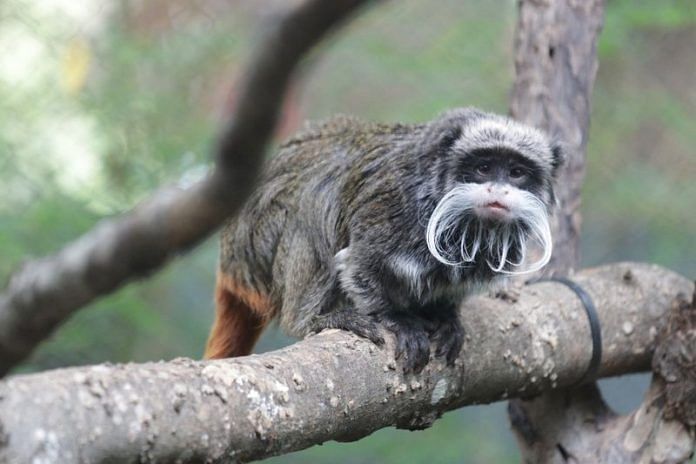(Reuters) – Two emperor tamarin monkeys that suspiciously disappeared earlier this week from the Dallas Zoo after their habitat was intentionally compromised have been found and returned to the zoo, police said.
The monkeys were discovered in an abandoned home in the city of Lancaster, a suburb just south of Dallas, the Dallas Police Department tweeted late on Tuesday, along with a photograph of one of the animals perched in a closet.
The tamarin monkey disappearance was the latest in a string of suspicious activity at the zoo over the last two weeks, that included the cutting open of enclosures for langurs monkeys and a clouded leopard, and the suspicious death of a 35-year-old vulture. The clouded leopard escaped, causing the zoo to close, but it was later found.
It is not known if any of the incidents was linked to the escape of the tamarin monkeys, which were brought back to the zoo where they were to be examined by veterinarians.
“We are thrilled beyond belief to share that our two emperor tamarin monkeys have been found,” the zoo said in a tweet.
Earlier on Tuesday, Dallas police tweeted a photo of a young man, whom the department said detectives would like to speak with regarding the disappearance of the monkeys. On Wednesday morning, a department spokesperson said police had yet to make contact with the man.
Dallas Zoo staff discovered the monkeys were missing on Monday morning and alerted the police, the zoo said, adding that investigators believed the animals were removed from their habitat.
The zoo said staff were unable to find the monkeys in a search of the park grounds, and that the animals would have likely stayed close to home if their escape had been accidental.
Native to South America’s Amazon River Basin, emperor tamarins are a species of small monkeys with red tails and long, white whiskers that resemble a mustache, according to the Smithsonian’s National Zoo & Conservation Biology Institute.
(Reporting by Brendan O’Brien in Chicago; Editing by Bernadette Baum)
Disclaimer: This report is auto generated from the Reuters news service. ThePrint holds no responsibilty for its content.



